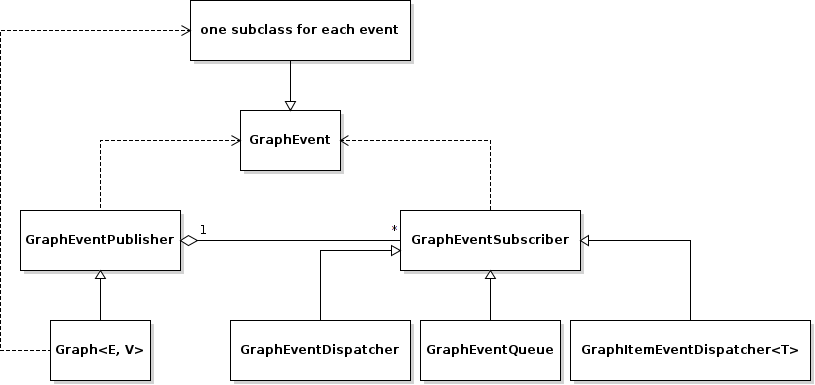Events
Graph Events
The event-system is used by the Graph to inform the user about changes to the
graph structure.

GraphEventPublisher
The GraphEventPublisher manages the subscribers and provides methods to
notify subscribers about events. Every class that wants to publish events
needs to extend GraphEventPublisher
GraphEventSubscriber
In order to receive events a class needs to extend GraphEventSubscriber
and override the notifyGraphEvent() method.
Three convenience classes already exist, that do this and simplify
the usage of the event-system. Thus there is usually no need to derive from
GraphEventSubscriber directly:
-
The
GraphEventDispatcherhandles all events and provides virtual methods for each event. Thus a subscriber can simply extend the dispatcher and override the methods that it cares about. -
The
GraphEventQueuebuffers all events in a queue. Ifflush()is called, all events are processed at once. The user needs to override theprocess()method to process the events. The queue detects contradicting events and removes them from the queue. E.g. if a frame is added and removed beforeflush()is called, neither the added- nor the removed-event is processed. -
The
GraphItemEventDispatcher<T>is a special dispatcher that is used to receive typed item events. To receive only item events for a certain item type, the user should derive fromGraphItemEventDispatcher<T>whereTis the item type that he cares about.
Tree Events
The TreeView does not use the above event system. Instead it provides
simple events using boost signals.